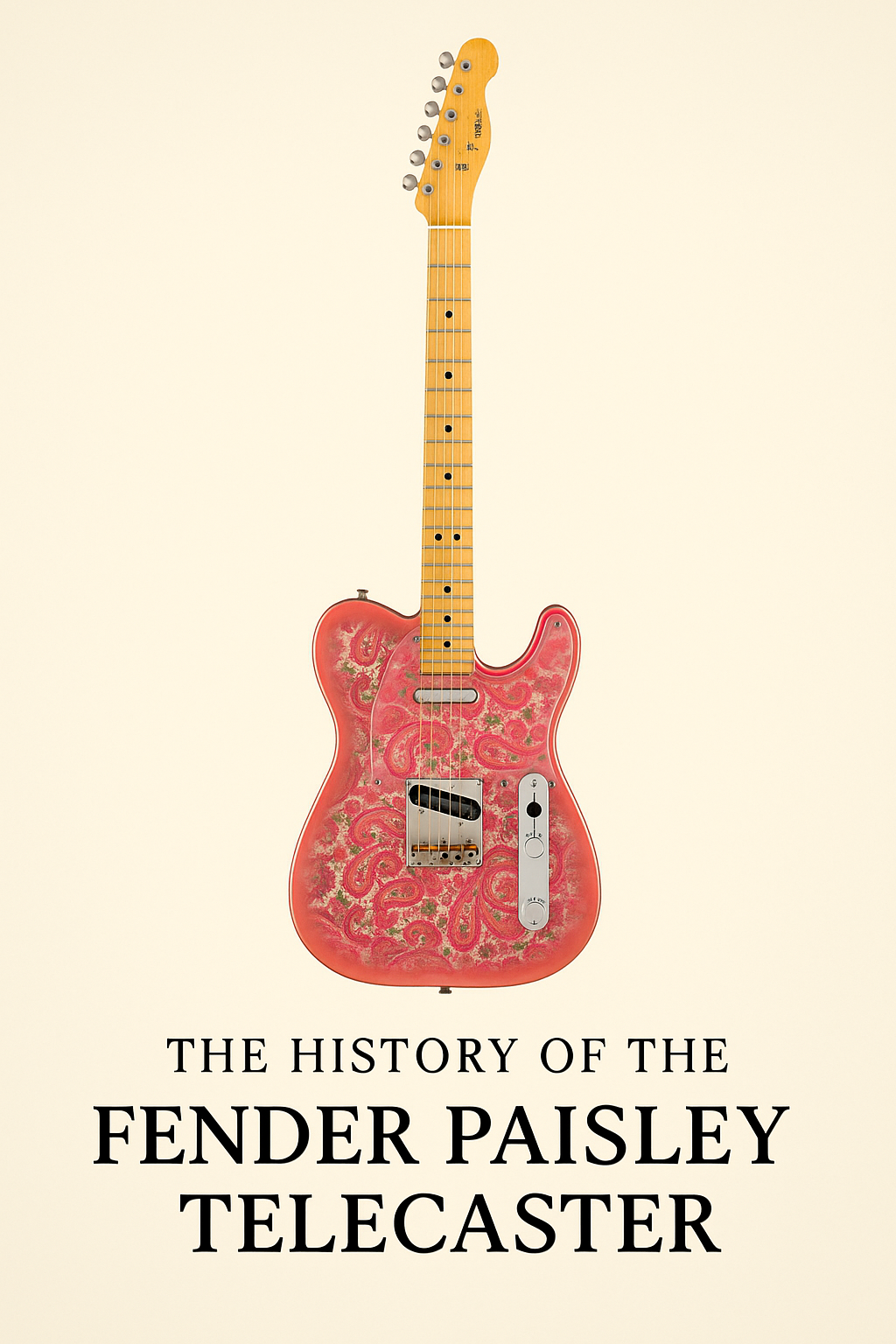In the late 1960s, as popular music plunged headfirst into psychedelia, Fender made one of its boldest visual statements yet: the Fender Paisley Telecaster. Drenched in swirling pink and silver floral patterns, this striking version of the classic Telecaster not only embodied the era’s countercultural aesthetic but also found favour among some of the most distinctive players in country and rock.
Origins and Manufacture
The Fender Paisley Telecaster debuted in 1968, during a transitional period for the company. CBS had taken over Fender in 1965, and by the late ’60s, Fender was experimenting with new looks to appeal to younger, more flamboyant musicians.
The Paisley Telecaster was produced alongside a companion model, the Blue Flower Telecaster, using a clever (and cost-effective) technique. The design was not painted directly onto the body. Instead, Fender applied wallpaper with a paisley motif over a basswood or alder body, sealed it with clear polyester, and then hand-sprayed a burst around the edges. The result was a truly psychedelic version of the Telecaster that retained its sonic integrity while turning heads onstage.
Production of the original run was limited to 1968–1969, making vintage examples highly collectible today.
Differences from Standard Telecasters
While the core construction remained consistent with late-‘60s Telecasters—bolt-on maple necks, single-coil pickups, and a three-saddle bridge—the Paisley Telecaster did stand out in a few key areas:
-
Visual Finish: The obvious difference was the paisley wallpaper finish, over which a pinkish-burst edge was sprayed. This visual flair had no parallel in Fender’s standard lineup.
-
Neck and Fingerboard: Most Paisleys featured a one-piece maple neck, typical of the era, with a U-shaped profile.
-
Pickups: Some Paisleys are noted to have slightly hotter bridge pickups than other Teles of the day, although many components were consistent across the standard line.
-
Weight and Wood: Some bodies were made of basswood, which differed from the more common alder or ash used in many other Teles, possibly contributing to a slightly different tonal character.
Reissues and Modern Versions
Due to its cult appeal, Fender has reissued the Paisley Telecaster multiple times:
-
1985 MIJ Reissues: Crafted in Japan, these were the first official reissues and are highly regarded.
-
Made in Mexico (MIM) Versions: Introduced in the 2000s, with more affordable pricing and modern neck profiles.
-
Custom Shop Editions: Fender’s highest-end reissues with relic finishes and period-correct specs.
-
Brad Paisley Signature Model: Released in 2017, this lightweight version features a roadworn silver sparkle paisley finish, a mix of woods (spruce and paulownia), and custom pickups.
Notable Players
-
James Burton – While best known for his Pink Paisley Telecaster later in his career, Burton helped solidify the model’s status as a twangy, country-rock weapon.
-
Brad Paisley – The modern-day Tele king, Brad Paisley not only plays a custom silver Paisley model but has an official Fender signature version.
-
Jeff Buckley – Although not his main axe, Buckley occasionally used a Paisley Tele, adding to the model’s cult mystique.
-
Dwight Yoakam – Often seen with a paisley finish on stage, keeping the style alive in contemporary country music.
Conclusion
The Fender Paisley Telecaster is more than just a flashy twist on a classic—it’s a symbol of a psychedelic era and a testament to Fender’s willingness to experiment. From vintage originals to modern reissues and artist models, the Paisley Tele remains one of the most distinctive and collectible guitars in the Fender family.









